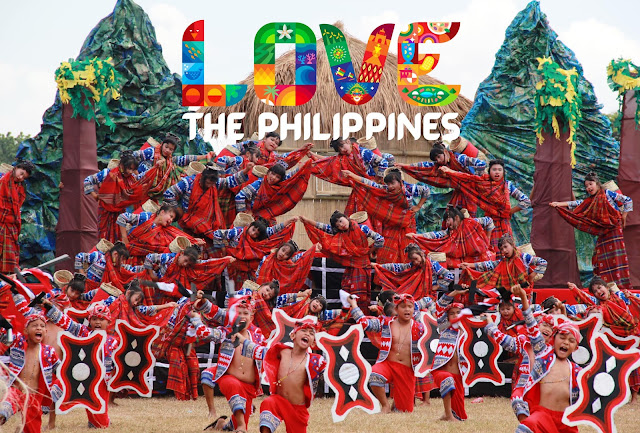Can ‘Love the Philippines’ Deliver?
The Department of Tourism has recently unveiled the country's new tourism slogan, "Love the Philippines," which replaces the previous slogan, "It's More Fun in the Philippines." This new campaign aims to provide travelers with not just fun, but also meaningful experiences. The campaign, which received mixed reactions from the public, has a budget of ₱49 million. Some people are questioning whether this investment is something to be proud of.
According to Tourism Secretary Christina Frasco, the campaign is meant to appeal to the hearts of Filipinos and showcase the country's hospitality. The "enhanced" campaign slogan also supports the government's efforts to establish the Philippines as a prominent "tourism powerhouse" in Southeast Asia, following the guidelines outlined in the National Tourism Development Plan for 2023–2028.
The campaign takes into account the changing travel landscape, where post-pandemic tourists are seeking more meaningful and authentic experiences. Marie Adriano, Brand and Strategic Planner at DDB Group Philippines explains that these "changed travelers" are looking for unique experiences that allow them to immerse themselves in other cultures.
However, the "Love the Philippines" campaign faced controversy when it was discovered that the promotional video included stock footage from other countries, including Thailand, Indonesia, and the United Arab Emirates. These clips were found on Storyblocks, a stock footage website.
DDB Philippines, the agency responsible for creating the video, apologized to the Department of Tourism and the Filipino people for using non-original footage. The agency explained that the video was meant to be an internal mood video and was produced at their own expense. DDB Philippines also pointed out that using stock footage in mood videos is common practice in the industry.
The agency acknowledged that using foreign stock footage in a campaign promoting the Philippines was an oversight and inappropriate. The video has since been taken down, and DDB Philippines is cooperating with an investigation by the Department of Tourism.
The Department of Tourism has launched an investigation into the matter and stated that it will take necessary action to protect the country's interests.
Furthermore, journalist Howie Severino suggested adding a comma to the "Love the Philippines" campaign slogan, making it "Love, the Philippines." He explained that the addition of a comma would change the tone of the slogan from a command to a gentle expression of affection from the Philippines to the rest of the world.
Severino's suggestion received mixed reactions online, with some agreeing that the comma would make the slogan more versatile and effective in promoting tourism. However, there is no official statement or action from the Department of Tourism regarding this suggestion.
Despite this setback, the Department of Tourism is optimistic that the "Love the Philippines" campaign will help establish the country as a major tourism destination in Asia. The campaign is just the beginning of many initiatives aimed at enhancing tourism and showcasing all that the country has to offer.
My take on the campaign
The "Love the Philippines" video was removed from the Department of Tourism's official social media pages after it was discovered that it contained stock footage from other countries. But some Filipinos were quick to download and re-upload the video on platforms like YouTube.
After watching the promotional video, I found it difficult to connect with or feel positive about its portrayal of the Philippines' top tourist destinations. It seemed to me that the creative team behind the project had overlooked other parts of the country and its people.
I was hoping to see Mindanao's destinations, culture, heritage, and people featured in the video. However, upon watching it, I could not identify any familiar images. I even rewatched it to make sure, but I still could not find any recognizable scenes.
Perhaps the perception of Mindanao as a "war-torn" island still persists, making it difficult to promote as a tourist destination, especially to foreign visitors. Despite its rich culture, heritage, and natural beauty, the negative image associated with the island may overshadow its potential as a tourism hotspot.
The government needs to establish a strong and consistent tourism brand to effectively attract visitors from around the world. Other Southeast Asian countries, such as Thailand and Vietnam, have successfully established a strong tourism identity and have become popular destinations for international travelers. We hope that the Philippines can follow their lead and develop a permanent tourism brand that effectively showcases the country's unique attractions and culture.
Tourism branding is inherently political, as it involves the promotion of a country's image and identity to the world. The success of a tourism campaign depends not only on its ability to stand on its own, but also on its ability to become ingrained in the local pop culture. By achieving this level of cultural integration, a tourism campaign can attain immortality and remain memorable to the public for years to come.
In the case of the Philippines, a successful tourism campaign must resonate with the Filipino people and reflect their unique values, traditions, and way of life. By doing so, it can effectively promote the country as a desirable destination for tourists from around the world.
While the controversy surrounding the "Love the Philippines" campaign has certainly generated buzz, it remains to be seen whether the new slogan will be successful in promoting tourism in the country. Only time will tell if it can surpass the success of the previous campaign slogan, "It's More Fun in the Philippines." Ultimately, the effectiveness of the campaign will depend on its ability to attract visitors and showcase the beauty and diversity of the Philippines.



Comments
Post a Comment
The author encourages readers to post sensible comments in order to have meaningful discussions. Posting malicious, senseless and spam comments are highly discouraged.
Thank you for reading Yadu Karu's Blog.